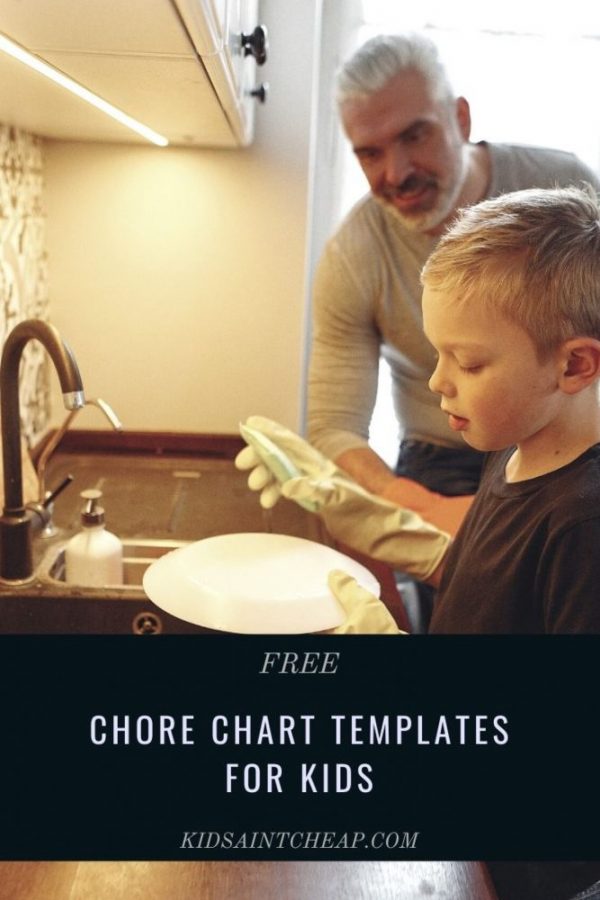One of the most wonderful gifts you can give your children is a healthy understanding of money. Not a craving for it or an assumption that it will lead to happiness. Instead, you have the privilege – the responsibility – to teach children about hard work, the power of saving, the dangers of debt, and the gift of giving. To help your children learn, we’ll also set you up with a free savings chart for kids.
How to Teach Your Child About Saving Money
Many people are in crisis mode, financially. It’s impossible to know what they learned or didn’t learn about money at home, but would America look different if more parents taught their children the principles I listed above? What if more parents led by example by communicating together about a budget, saying no more often to frivolous spending, and showing their children how to save up and pay cash instead of using credit cards?
It’s purely my speculation, but I’d go so far as to say we’d have less stress, less divorce, fewer addictions, more giving, and greater job satisfaction. Do you agree?
With the right steps, we can teach our children to live differently.
What About Student Loan Debt?
You’re probably thinking, “What about student loans? I was just trying to further my education and now I’m overwhelmed by debt as a result.” Totally valid point. I remember approaching high school graduation and hearing everyone discuss their reasons for choosing one school over another. NOT ONCE did my friends and I stew over the debt load we’d receive from student loans. None of us saw what was coming.
In fact, according to StudentLoanHero.com, outstanding student loan debt reached more than $1.64 trillion in 2020.
How can we teach our children to save money in the face of such a burden of debt?
Start the Conversations
A great way to educate your young tribe about the dos and don’ts of spending is to create an open line of communication. Encourage them to ask questions. Show them the process of paying for your groceries or a meal at a restaurant. Take them to the bank and show them how you make a savings deposit.
Also, a conversation is a great way to tackle topics like:
- Work ethic
- Getting a job
- Planning for the future
- Saving for a major purchase
- Saving for college (tell them about the ways you are saving for their college while they’re young)
- Integrity
- Greed
- Envy
- Contentment
- Generosity
You don’t have to run down this list every night at the dinner table, but the more conversations you do have about these topics, the more seeds your planting in your child’s mind. You’re teaching her how to think about money, not what to think.
Put Them to Work
We’ve covered the important step of talking about money. Next, it’s time to apply what your child has learned. If he’s old enough to hold a broom or to straighten up his room, your child is old enough to get paid for chores.
It’s important that he knows the money isn’t just for spending. Saving is a difficult concept for young minds, at first, unless they have something for which they’re saving. For example, if your daughter sees a Belle doll in the toy aisle and begs for you to buy it, you have some choices. You can purchase the doll, you can discuss the cost and why it’s not in the budget, or you can write down the dollar amount on a paper, head home, and help her calculate how many chores it’d take to save for the doll.
To aid in that endeavor, here are some free tools you can use with your child.
Free Savings Chart for Kids – and Other Great Savings Tools
Printable Savings Chart for Kids – via CouponsAreGreat.net
Downloadable “Share, Save, Spend” Chart for Kids – via iMom.com
Printable Savings Thermometer Chart – via Frugal-Mama.com
52-Week Money Challenge for Kids
Final Thoughts
Combine a free savings chart for kids with some great conversations and hard work around the house. You’ll be setting the stage for great financial decisions, which will hopefully follow your children into adulthood!
Got some tips for teaching children to save money? Share one below!
Read More
5 Chores That Teach Work Ethic Principles to Toddlers
How Much, If Any, Should You Pay Your Kids for Chores?
Teach Them Young: 3 Key Tips to Help Your Child Learn about Money
Editors note: This article has been brought to you by Dollar Dig. Dollar Dig helps you save money at over 4,000 stores. Open a Dollar Dig account today to start saving!













